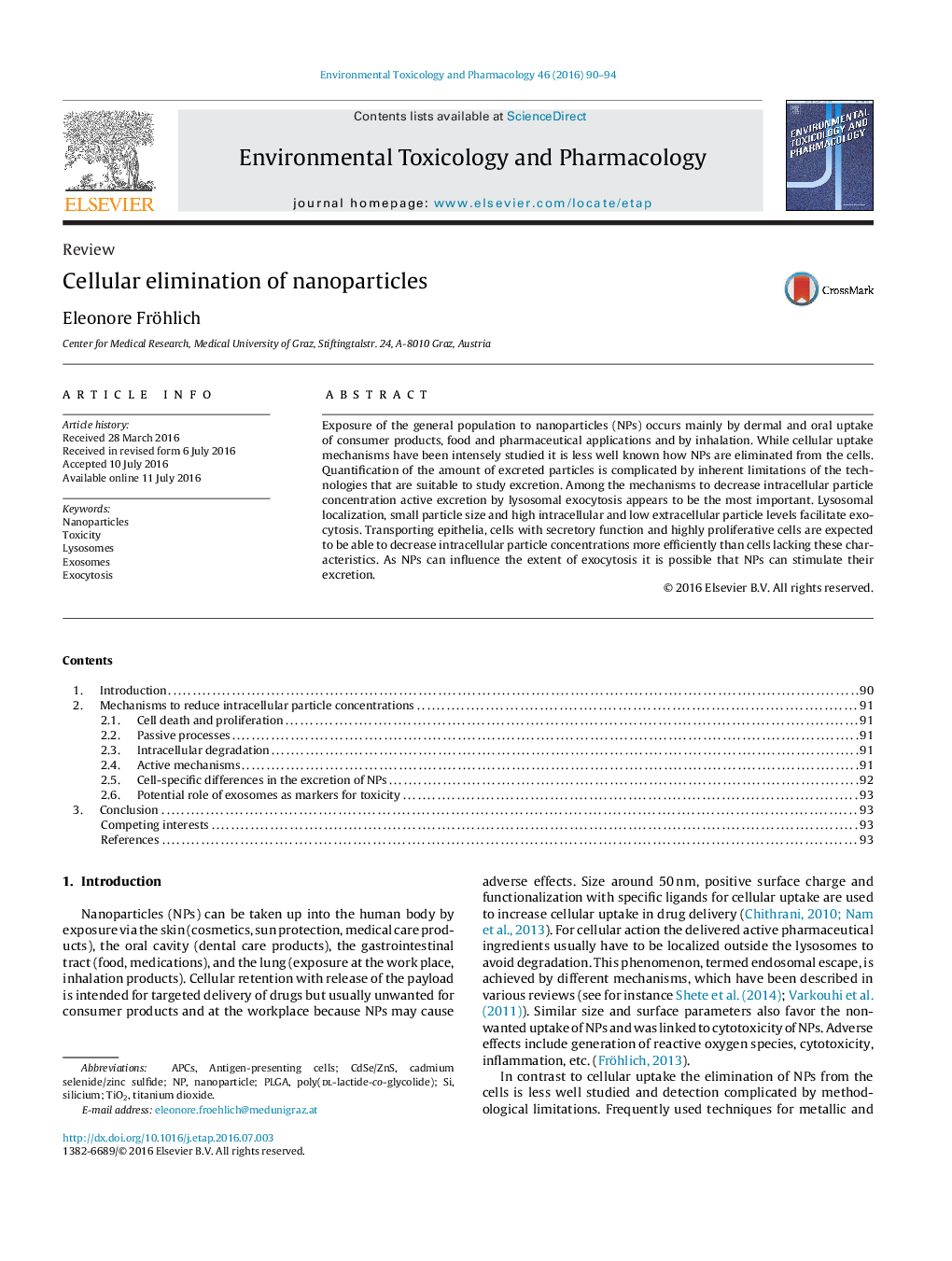| Article ID | Journal | Published Year | Pages | File Type |
|---|---|---|---|---|
| 2582804 | Environmental Toxicology and Pharmacology | 2016 | 5 Pages |
•Particle dissolution contributes to cellular elimination.•Lysosomal exocytosis is the main mechanism for nanoparticle excretion.•Cells with secretory function might be less sensitive to particle accumulation.•Exosome secretion may be triggered by nanoparticles.
Exposure of the general population to nanoparticles (NPs) occurs mainly by dermal and oral uptake of consumer products, food and pharmaceutical applications and by inhalation. While cellular uptake mechanisms have been intensely studied it is less well known how NPs are eliminated from the cells. Quantification of the amount of excreted particles is complicated by inherent limitations of the technologies that are suitable to study excretion. Among the mechanisms to decrease intracellular particle concentration active excretion by lysosomal exocytosis appears to be the most important. Lysosomal localization, small particle size and high intracellular and low extracellular particle levels facilitate exocytosis. Transporting epithelia, cells with secretory function and highly proliferative cells are expected to be able to decrease intracellular particle concentrations more efficiently than cells lacking these characteristics. As NPs can influence the extent of exocytosis it is possible that NPs can stimulate their excretion.
